Jubilee
THE FAMOUS NOVI SAD GYMNASIUM ”JOVAN JOVANOVIĆ ZMAJ” IN THE SERIES OF IMPORTANT DATES
Four Centuries of Continuous Education
On Saint Sava’s Day in 2010, this top quality school celebrated the 200 years since the establishment of the Serbian Orthodox Grammar School, its predecessor. Next year, in 2011, it will celebrate 280 years since the beginning of the Spiritual Academy of Bishop Visarion, and in 2013, it will be exactly 310 years that the school has existed on the same location, in the yard of St. George’s Church. Many reasons to remind ourselves of that bright chronicle, in which a lot more can be learned than about one educational institution
By: Đorđe M. Srbulović
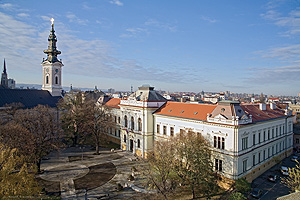 ”You are already in Europe!” said the German Ambassador to Serbia, Wolfram Mas, with unhidden pleasure, during his recent visit to Gymnasium ”Jovan Jovanović Zmaj” in Novi Sad. Director of the French Cultural Centre Pascal Delpech said that this gymnasium very much reminds her of the prestigious French lyceum ”Henri IV”. And South African-British writer Christopher Hope: ”I have visited many schools around the world. Only this one reminds me of Oxford.” ”You are already in Europe!” said the German Ambassador to Serbia, Wolfram Mas, with unhidden pleasure, during his recent visit to Gymnasium ”Jovan Jovanović Zmaj” in Novi Sad. Director of the French Cultural Centre Pascal Delpech said that this gymnasium very much reminds her of the prestigious French lyceum ”Henri IV”. And South African-British writer Christopher Hope: ”I have visited many schools around the world. Only this one reminds me of Oxford.”
If anybody should ever write the history of Serbian literacy, knowledge and education, the Novi Sad gymnasium ”Jovan Jovanović Zmaj” would receive a very important place. Through its establishment, development and continuity, it is possible to trace all parts of the unit that we can generally call History of ”prečanski Srbi”, from the Great Migrations until today, but also the origin, rise, development, pogroms, decadence, fall and d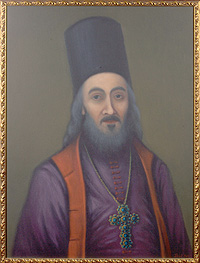 isappearance of Serbian elite, not only in Vojvodina. The existence of this gymnasium we can trace continually from 1703 until today. And on the same location. It has not moved an inch, only the school buildings have become more representative. isappearance of Serbian elite, not only in Vojvodina. The existence of this gymnasium we can trace continually from 1703 until today. And on the same location. It has not moved an inch, only the school buildings have become more representative.
How and where did Serbian children in the territories north of the Sava and Danube, and west of the Drina, learn the fundamental literacy before the Migration in 1690, has not been studied. However, the following is known: in the Kovilj Monastery, a Serbian elementary school existed as early as 1607, and in Riđica in 1626. Later accounts take us to the end of the 17th century, when Patriarch Arsenije, people’s leaders and the people were given privileges by the Holy Roman Emperor Leopold I. These privileges represented a formal-legal confirmation that the Serbs, when crossing the Sava and Danube, and settling in desolated areas of what is today the province of Vojvodina, Hungary and Croatia, were settling on their land and could, within the autonomy, manage the organization of all segments of people’s lives. The guaranteed rights included the right to organize schools in the national language, i.e. Serbian, under the auspice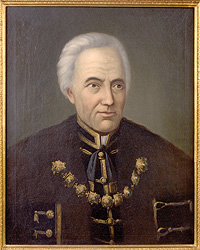 s of the national, i.e. Serbian Orthodox Church. Moreover, the Habsburg State stimulated the establishment of schools. And already in 1695, a school was opened in Baja, in 1696 in the Bođani Monastery, in 1697 in Senta, and in 1703 as many as ten schools, including the one in the yard of the St. George’s Church in what was then Petrovaradinski šanac, now Novi Sad. Thereafter, schools were being founded in all Serbian settlements and provinces: both in Granica (the Border), and in Provincijal (the Province). s of the national, i.e. Serbian Orthodox Church. Moreover, the Habsburg State stimulated the establishment of schools. And already in 1695, a school was opened in Baja, in 1696 in the Bođani Monastery, in 1697 in Senta, and in 1703 as many as ten schools, including the one in the yard of the St. George’s Church in what was then Petrovaradinski šanac, now Novi Sad. Thereafter, schools were being founded in all Serbian settlements and provinces: both in Granica (the Border), and in Provincijal (the Province).
Serbian hierarchs, above all Patriarch Arsenije III, and then Isaija Đaković, tried in vain, invoking the granted privileges, to open Serbian schools of a higher order, as well as a printing office. Failing to get what had belonged to them, just like they could not get many other things guaranteed to them in writing, they turned to ”our holy emperor”, Peter I Alekseevich Romanov, ”the Great” (as the history will remember him), asking for assistance. Already in 1728, first Serbian lower gymnasium was opened in Sermski Karlovci, and soon after the second one. The first one was led by Maksim Suvorov, and the second one by Emanuil Kozačinski.
FAST GROWING OF THE TRUE ELITE
Simultaneously, one of the greatest bishops on the throne of the Eparchy of Bačka, Visarion Pavlović, who had a great contribution in the development of what was then Šanac, later Novi Sad (built all Christian Orthodox temples, which exist even today, from solid materials, opened the first hospital ”Hošpitalj serbski”...), builds and opens, on Mala Gospojina in 1731, the ”Petrovaradinska roždestveno-bogorodičina škola latinsko-slovenska”, the so called Spiritual Academy for young theologians. Since 1741, thanks to the wise Dionisije Novaković, one of at least thirty Serbs who, in the first half of the 17th century, attended the Kiev Spiritual Academy, but the only one who attended this school for its entire duration (11 years altogether!), and this school in Šanac grows into a kind of Spiritual Academy. The first rector of this academy was Matej Jelenek, a Slovakian and a Lutheran, who remained there for 12 years.
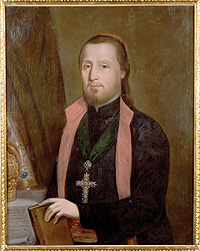 The testimony of the reputation that this school had in the Monarchy is also the fact that, in 1769, Empress Marija Theresa issued a decree pursuant to which only those persons who graduated from the Academy of Bishop Visarion in Novi Sad could be appointed as priests in Serbian churches. Its students were the most educated priests of the Archbishopric of Karlovci: Lukijan Mušicki, Stefan Stratimirović, Simeon Piščević... And so, very quickly, the true people’s elite were created, and they would in the following centuries strongly and unmistakably be at the helm of the people’s ship. In addition to the said Dionisije Novaković, teachers in this school were (among others) Jovan Rajić, the author of the first modern Serbian history, and Zaharija Orfelin. Textbooks were brought from Russia, but they were also written by the professors themselves, primarily by Novaković. Novaković insisted that the school library should be supplied with new books from Russia, following the important idea of Spiritual Regulament of Petar the Great and Teofan Prokopovič, ”because without a library, the Academy is like without a soul”. Formally opened in 1822, by the time of bombing of Novi Sad from the Petrovaradin Fortress, on June 12th, 1949, this library was continually replenished with new books. And then, when it was destroyed, it was probably the largest national public library. The testimony of the reputation that this school had in the Monarchy is also the fact that, in 1769, Empress Marija Theresa issued a decree pursuant to which only those persons who graduated from the Academy of Bishop Visarion in Novi Sad could be appointed as priests in Serbian churches. Its students were the most educated priests of the Archbishopric of Karlovci: Lukijan Mušicki, Stefan Stratimirović, Simeon Piščević... And so, very quickly, the true people’s elite were created, and they would in the following centuries strongly and unmistakably be at the helm of the people’s ship. In addition to the said Dionisije Novaković, teachers in this school were (among others) Jovan Rajić, the author of the first modern Serbian history, and Zaharija Orfelin. Textbooks were brought from Russia, but they were also written by the professors themselves, primarily by Novaković. Novaković insisted that the school library should be supplied with new books from Russia, following the important idea of Spiritual Regulament of Petar the Great and Teofan Prokopovič, ”because without a library, the Academy is like without a soul”. Formally opened in 1822, by the time of bombing of Novi Sad from the Petrovaradin Fortress, on June 12th, 1949, this library was continually replenished with new books. And then, when it was destroyed, it was probably the largest national public library.
Also worth mentioning is the fact that the first woman who gained high school education in Serbian history attended and graduated from this school, and also the first woman who learned to read and write in Latin. It was Marta Neškova from Novi Sad. It must be said that the Serbs accepted Latin language very well, and the reasons are twofold. First, Latin language was used by the elite of the Habsburg state and the Serbs strived to belong to those on the top; secondly, Latin did not facilitate the loss of national identity, unlike German and Hungarian language.
TOP QUALITY EDUCATION, DESPITE EVERYTHING
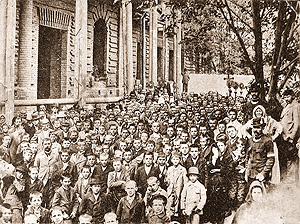 Carried by the promises and reforms of Joseph II, a bad ruler whose hasty and imprudent reforms almost paralyzed the state, in 1789 the Serbs from Novi Sad closed their gymnasium, only to open, on its place, the gymnasium for all religious affiliations. However, by rejecting Josephs’ reforms, this gymnasium became a Catholic one. Although this had caused great dissatisfaction, Serbian children attended this school, because it offered education that was on the same high level as before. In 1791, a new two-story building was built for this school. It had fifteen rooms, including eight classrooms and halls, two study rooms, a library and director’s office, as well as the attendant’s apartment. During the said bombing in 1849 it was destroyed, but rebuilt to a certain extent in 1852. Directors of this school were: Andrej Gemza, Matija Lang, Toma Greguš, Jozef Jankovič and Andrej Duborvski. Carried by the promises and reforms of Joseph II, a bad ruler whose hasty and imprudent reforms almost paralyzed the state, in 1789 the Serbs from Novi Sad closed their gymnasium, only to open, on its place, the gymnasium for all religious affiliations. However, by rejecting Josephs’ reforms, this gymnasium became a Catholic one. Although this had caused great dissatisfaction, Serbian children attended this school, because it offered education that was on the same high level as before. In 1791, a new two-story building was built for this school. It had fifteen rooms, including eight classrooms and halls, two study rooms, a library and director’s office, as well as the attendant’s apartment. During the said bombing in 1849 it was destroyed, but rebuilt to a certain extent in 1852. Directors of this school were: Andrej Gemza, Matija Lang, Toma Greguš, Jozef Jankovič and Andrej Duborvski.
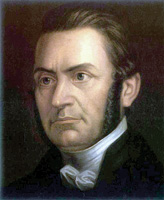 However, the Serbs tried, in all ways possible, to return the gymnasium into its people’s and orthodox lap. The action initiated to this end in 1795 did not give results, but the cause was not abandoned. Then, on Saint Sava Day in 1810, while Napoleon’s conquering tailored the map of Europe, snatching the Habsburg Empire under its wing, deprived of his offspring and almost completely blind, Sava Vuković of Beregsova, a Serb from Mostar, who lived in Novi Sad, where he had also gained nobility, signed the Inaugural Letter and gave 20,000 forints for the establishment of the Serbian Orthodox Great Grammar School in Novi Sad. In the Inaugural Letter, three main tasks were entrusted to the gymnasium: general education and upbringing of Serbian youth in the Serbian national spirit, preserving and nurturing of Serbian Orthodox religion, preserving and studying of Serbian language and history and the history of Serbian literatu However, the Serbs tried, in all ways possible, to return the gymnasium into its people’s and orthodox lap. The action initiated to this end in 1795 did not give results, but the cause was not abandoned. Then, on Saint Sava Day in 1810, while Napoleon’s conquering tailored the map of Europe, snatching the Habsburg Empire under its wing, deprived of his offspring and almost completely blind, Sava Vuković of Beregsova, a Serb from Mostar, who lived in Novi Sad, where he had also gained nobility, signed the Inaugural Letter and gave 20,000 forints for the establishment of the Serbian Orthodox Great Grammar School in Novi Sad. In the Inaugural Letter, three main tasks were entrusted to the gymnasium: general education and upbringing of Serbian youth in the Serbian national spirit, preserving and nurturing of Serbian Orthodox religion, preserving and studying of Serbian language and history and the history of Serbian literatu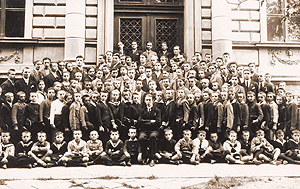 re. Stimulated by the Bishop of Bačka Gedeon (Petrović) and Metropolitan Stefan (Stratimirović), a great number of people from Novi Sad joined this noble gesture and, in a very short time, 1000,000 forints were collected. Dositej Obradović was then at the head of the Ministry of Education in Karađorđe’s Serbia, and the chief supervisor of Serbian schools in the Monarchy was the wise Uroš Nestorović. Napoleon plagued Europe, the rebellious Serbia was giving in under Ottoman attacks, together with disinterested or powerless allies, and in the environment of general downfall, as it had seemed and as it had been, the Serbs living north of the Sava and Danube decided to invest into a high quality education! Young re. Stimulated by the Bishop of Bačka Gedeon (Petrović) and Metropolitan Stefan (Stratimirović), a great number of people from Novi Sad joined this noble gesture and, in a very short time, 1000,000 forints were collected. Dositej Obradović was then at the head of the Ministry of Education in Karađorđe’s Serbia, and the chief supervisor of Serbian schools in the Monarchy was the wise Uroš Nestorović. Napoleon plagued Europe, the rebellious Serbia was giving in under Ottoman attacks, together with disinterested or powerless allies, and in the environment of general downfall, as it had seemed and as it had been, the Serbs living north of the Sava and Danube decided to invest into a high quality education! Young 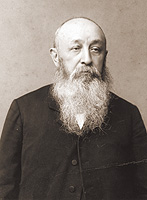 generations needed to have their future. generations needed to have their future.
During its entire life within the Austrian Empire, the gymnasium was administered by the Patronage, headed by the Bishop of Bačka. Consent for the establishment and operation of the gymnasium was given by Emperor Franz I. In 1816, he also approved the gymnasium flag, on one side of which there was an illustration of ”Jesus as a Shepherd”, and ”Saint Sava is blessing Serbian children” on the other side. This flag has been preserved in the Gymnasium until today, and since recently it has been the school’s official flag. The Gymnasium was granted public right in 1818, meaning that its graduates could enroll in any faculty in the Monarchy, without having to take entrance exams.
BOMBING AND OTHER DESTRUCTIONS
One of the greatest European intellectuals in the fist half of the 19th century, Pavel Jozef Šafarik, was appointed as the Gymnasium Director in 1819, and he defined the directions in which the school would develop in the following decades. This polyglot with wide general education had a significant contribution to the raising of the level of education. The curriculum was implemented in line with the state regulation Ratio educationis. Until the war between Serbia and Hungary in 1848/49, it had six classes, subject matters were taught in German language, except for religious teaching, which was held in Serbian.
The first gymnasium choir was established in 1838, and in 1841 the School of Music was opened. Until 1848, it had seven directors; besides Šafarik, the more famous are Jovan Hadžić, Milovan Vidaković...
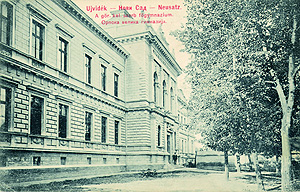 During the bombing of Novi Sad, the gymnasium building was destroyed, together with the following: a highly valuable natural science collection, didactic tools, documentation.... The library was moved to Almaška Church, but even this church was attacked with cannons, which caused a great fire. The Gymnasium continued its work in 1852, completely impoverished. It stagnated until 1860, when it received a big assistance from Franz Joseph, under the condition that it preserves its national and religious character. During the bombing of Novi Sad, the gymnasium building was destroyed, together with the following: a highly valuable natural science collection, didactic tools, documentation.... The library was moved to Almaška Church, but even this church was attacked with cannons, which caused a great fire. The Gymnasium continued its work in 1852, completely impoverished. It stagnated until 1860, when it received a big assistance from Franz Joseph, under the condition that it preserves its national and religious character.
Already in 1868, the first maturity test in Serbian education would take place in it (graduation). The test was conducted by probably the greatest Serbian intellectual of that time, Jovan Hadžić, who would die a year later (at that time, the Gymnasium was managed by archimandrite, who later became Patriarch German Anđelić). Mandatory subjects were: Latin, Serbian, Greek, German, Hungarian, religious teaching, mathematics, geography, history, physics, geometrical drawing, natural science, philosophy and penmanship. Optional subjects were: French, descriptive geometry, church chanting, singing and music (piano, violin, orchestra playing and tamburica orchestra). The school was also the first gallery, and in 1866, the Founding Assembly of the United Serbian Youth took place in it.
Efforts aimed at closing the Gymnasium, or have it profoundly change its activity and mission, ensued after the Austro-Hungarian treaty in 1867. Since then, Hungarian government is trying to hinder the operation of Serbian gymnasium as much as possible. Despite these efforts, almost 16,000 students attended this school between 1868 and 1918. Most of them were Serbs, but there were many Germans, Hungarians, Jews, Croatians, Slovakians... It is a testimony of the quality of the school and instruction conducted in it. If we were to list all the famous people from Serbian history who went through the Gymnasium as students or teachers, it would require a far longer article than this. Many students’ papers were published in it, and in 1914 young people founded in this school the football club ”Vojvodina”. The current Gymnasium building, a very representative palace in neo-renaissance style, was built in 1900, thanks to the donation of baron Miloš Bajić, grandson of duke Miloš. It was designed by architect Vladimir Nikolić, a man whose work adorns Sremski Karlovci and who, in addition to the Gymnasium, also designed the building of Vladičanski dvor in Novi Sad.
RETURN TO THE PATH OF GLORY
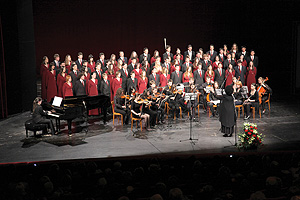 During World War One, the Gymnasium was primarily used to accommodate Austro-Hungarian army. Classes were organized sporadically, but the school was being regularly and very meticulously robbed. Among other things, two thirds of the books disappeared from the students’ library, and about 2,500 from teachers’ library. The library was rebuilt in 1927. During World War One, the Gymnasium was primarily used to accommodate Austro-Hungarian army. Classes were organized sporadically, but the school was being regularly and very meticulously robbed. Among other things, two thirds of the books disappeared from the students’ library, and about 2,500 from teachers’ library. The library was rebuilt in 1927.
After World War One, in the new state, Kingdom of Yugoslavia, the Gymnasium became state-owned. It was frequently visited by the highest state officials, and in 1931 it changes its name into the State Male Practical High School of King Aleksandar I. For the purpose of physical education, a large playground was built on 3 hectares of land near the Danube, which exists even today, and which included fields for football and other ”ball” games, tennis, athletics and gymnastics. The playground was taken from the school after World War Two.
At the very beginning of this war, in April 1941, Hungarian occupation authorities prohibited the activities of the Gymnasium, as a dangerous nationalist institution, and established the Hungarian Royal State Gymnasium with classes in Serbian language. At that time, before the eyes of students and teachers, 20,000 books from the library were burned in the small schoolyard. The building survived German bombing in 1941, as well as the allies’ bombing in 1944. As well as in 1999.
At the end of June 1945, after the army had left the building, the newly founded Mixed Gymnasium was placed in it. In its further development in the socialist Yugoslavia, the Gymnasium will many times change its character and names, direction and course, and in school year 1959-60, it was given its current name ”Jovan Jovanović Zmaj”. It will remain a high school institution, following the fate and reforms of the state and the system, only to become gymnasium again in 1991.
In the past few years, after decades of wandering, rising, falling and stumbling, the school again becomes what it was in previous eras: the first-class, elitist educational national institution. Thanks to the engagement of its management and teachers, protected and nurtured by generations of new students in whom the past experiments failed to erase the code for eternity and beauty, as well as the need for true knowledge and permanent values, the school becomes an example to be followed by other educational institutions in the Homeland. For this reason, many renowned visitors who come from nearby or from faraway notice, with melancholy, that a building like this does not exist in the place where they live...
***
DR RADIVOJE STOJKOVIĆ, DIRECTOR OF GYMNASIUM ”JOVAN JOVANOVIĆ ZMAJ” IN NOVI SAD
Wide Cooperation and International Reputation
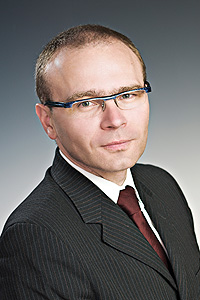 – Gymnasium ”Jovan Jovanović Zmaj” is currently attended by 987 students, and the teaching is divided into several departments: natural sciences-mathematics, humanities-linguistics, general, sports, while especially talented students attend the high school of mathematics. In the department of mathematics we have elementary school students enrolled in the seventh and eight grade who are talented for mathematics, in the Elementary School, which is a part of the Gymnasium. In addition to Gymnasium teachers, associates from the Faculty of Natural Sciences and Mathematics and the Faculty of Technical Sciences of the University in Novi Sad are also involved in the teaching, as well as associates from Novi Sad elementary schools. As of September 2010, the Gymnasium will introduce bilingual education: Serbian and French, or Serbian and Russian, for the students majoring in natural sciences-mathematics – says Dr Radivoje Stojković, Director of Gymnasium ”Jovan Jovanović Zmaj” for National Review. – Since 2008, our Gymnasium has been participating in the project ”Schools: Partners for the Future” of the Germany Ministry of Foreign Affairs, aimed at improving the quality of German language teaching, promoting German culture, building friendship and preparing for bilingual Serbian-German education in cooperation with Goethe Institute. Since 2009, we have had the centre called ”Russian World”, which includes a modern Russian media library, as well as the library that was a gift from the Foundation ”Russian World” from Moscow, which is under the auspices of the Russian President Dmitry Medvedev (its goal is the promotion of Russian language and culture). Since 2007, we have been cooperating with Spanish Cultural Centre ”Cervantes” from Belgrade, which is this year organizing Spanish language exams in the Gymnasium. Also since 2007, we have been cooperating with the French Cultural Centre and French Embassy on the introduction of bilingual Serbian-French education in the Gymnasium. We have intensified the activities on joint projects with schools in Czech Republic, Russia, France, Great Britain, Republika Srpska, Greece, Croatia and Macedonia. – Gymnasium ”Jovan Jovanović Zmaj” is currently attended by 987 students, and the teaching is divided into several departments: natural sciences-mathematics, humanities-linguistics, general, sports, while especially talented students attend the high school of mathematics. In the department of mathematics we have elementary school students enrolled in the seventh and eight grade who are talented for mathematics, in the Elementary School, which is a part of the Gymnasium. In addition to Gymnasium teachers, associates from the Faculty of Natural Sciences and Mathematics and the Faculty of Technical Sciences of the University in Novi Sad are also involved in the teaching, as well as associates from Novi Sad elementary schools. As of September 2010, the Gymnasium will introduce bilingual education: Serbian and French, or Serbian and Russian, for the students majoring in natural sciences-mathematics – says Dr Radivoje Stojković, Director of Gymnasium ”Jovan Jovanović Zmaj” for National Review. – Since 2008, our Gymnasium has been participating in the project ”Schools: Partners for the Future” of the Germany Ministry of Foreign Affairs, aimed at improving the quality of German language teaching, promoting German culture, building friendship and preparing for bilingual Serbian-German education in cooperation with Goethe Institute. Since 2009, we have had the centre called ”Russian World”, which includes a modern Russian media library, as well as the library that was a gift from the Foundation ”Russian World” from Moscow, which is under the auspices of the Russian President Dmitry Medvedev (its goal is the promotion of Russian language and culture). Since 2007, we have been cooperating with Spanish Cultural Centre ”Cervantes” from Belgrade, which is this year organizing Spanish language exams in the Gymnasium. Also since 2007, we have been cooperating with the French Cultural Centre and French Embassy on the introduction of bilingual Serbian-French education in the Gymnasium. We have intensified the activities on joint projects with schools in Czech Republic, Russia, France, Great Britain, Republika Srpska, Greece, Croatia and Macedonia.
The most deserving for today’s appearance, reputation and status of Gymnasium ”Jovan Jovanović Zmaj”, its Director, Mr. Stojković, was born in Pula in 1964. He graduated from the Faculty of Natural Sciences and Mathematics in Novi Sad, where he also earned his MA degree (2002) and PhD (2006). He has been the director of the Gymnasium since 2002, a member of the National Board of Education since 2005, president of the Association of Serbian High Schools since 2006, a member of GO of the European Association of Directors in Education since 2007. He teaches data structures and algorhithms at the Business College in Novi Sad.
***
Information
There is an increasing interest among pupils to enroll in this school, and they come from all over Serbia. Detailed information can be found on the official website of Gymnasium ”Jovan Jovanović Zmaj”: www.jjzmaj.znanje.info. It is sufficient to say that this website has had 630,000 visits thus far! And over 1,000 visitors attended the celebration of the 200th anniversary since the Inaugural Letter, which took place at the Serbian National Theatre in Novi Sad.
|
